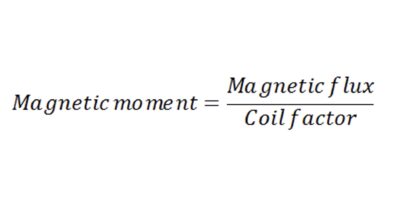Magnetic moments are a fundamental property of particles, atoms, and materials that describe the strength and direction of their magnetic fields. They play a crucial role in understanding how magnetic materials interact with external magnetic fields, and they have many important technological and scientific applications. In this article, we will explore what magnetic moments are, where they come from, the different types of magnetic moments, and why they are important in both theoretical and practical contexts.
Magnetic moments are intrinsic properties of particles, atoms, and materials that describe the strength and direction of their magnetic fields. They are pivotal in explaining how magnetic materials interact with external magnetic fields, contributing to various technological and scientific applications. This article explores the concept of magnetic moments, their origins, types, and their significance in both theoretical and practical contexts.
Origins of Magnetic Moments
Magnetic moments arise primarily from two sources: the orbital motion of electrons and the intrinsic spin of electrons.
- Orbital Magnetic Moment:
Electrons moving in orbits around the nucleus create loops of current, generating magnetic fields. This orbital motion contributes to a magnetic moment, with its direction perpendicular to the plane of the electron’s orbit.
- Spin Magnetic Moment:
In addition to their orbital motion, electrons possess an intrinsic angular momentum known as “spin.” The spin magnetic moment is an inherent property of electrons and contributes significantly to the total magnetic moment, particularly in materials with unpaired electrons.
The total magnetic moment of an atom or molecule is the sum of both orbital and spin contributions, with the spin component often being the dominant factor in many materials.
Types of Magnetic Materials
Magnetic moments in materials lead to various magnetic behaviors, depending on how individual moments align with each other. The primary types of magnetic materials are:
- Diamagnetism:
Diamagnetic materials exhibit a weak repulsion to an external magnetic field. They do not have a permanent magnetic moment, but when exposed to an external field, their internal magnetic moments align in the opposite direction, creating a subtle repulsive effect.
- Paramagnetism:
Paramagnetic materials have unpaired electrons, which align with an external magnetic field, producing a mild attraction. However, in the absence of the field, the magnetic moments remain randomly oriented, leading to no net magnetization.
- Ferromagnetism:
Ferromagnetic materials, such as iron, cobalt, and nickel, show strong, permanent magnetization. Their atomic spins align parallel within domains, creating a strong magnetic field that persists even when the external field is removed.
- Antiferromagnetism:
In antiferromagnetic materials, atomic spins align in opposite directions, canceling each other out and resulting in no net external magnetic field.
- Ferrimagnetism:
Ferrimagnetic materials, like certain oxides, exhibit spins in opposite directions but of unequal magnitude, resulting in a net magnetic moment. These materials behave similarly to ferromagnets, though with lower overall magnetization.
Significance of Magnetic Moments
Magnetic moments play a crucial role in various scientific fields and technologies:
Magnetic Materials:
The behavior of magnetic moments in materials defines their magnetic properties, such as whether a material is diamagnetic, paramagnetic, ferromagnetic, antiferromagnetic, or ferrimagnetic. These properties are essential for designing materials used in electronics, magnetic storage, and industrial applications.
Magnetic Resonance Imaging (MRI):
In MRI technology, magnetic moments of hydrogen nuclei in the human body align with a strong external magnetic field. Radiofrequency pulses disturb this alignment, and the emitted signals are used to produce detailed images of internal body structures.
Spintronics:
Spintronics exploits the magnetic moment of electron spins in addition to their charge, enabling the development of faster and more efficient electronic devices, particularly in data storage and processing.
Quantum Mechanics:
In quantum mechanics, magnetic moments are fundamental properties of subatomic particles like electrons and protons. They help explain atomic structures, chemical bonding, and interactions at the quantum level.
Measuring Magnetic Moments
Magnetic moments can be measured using techniques such as a Helmholtz coil and a Fluxmeter. For permanent magnets, these methods provide accurate and repeatable measurements, especially when the magnet’s size and shape are too complex for other measurement devices like Gaussmeters.
Additionally, magnetic moments can be used to derive other magnetic properties, such as remanence, coercivity, and maximum energy product. Although not as precise as hysteresisgraph measurement, this method is more cost-effective and practical for many applications.
Conclusion
Magnetic moments are fundamental to understanding and harnessing the properties of magnetic materials. From tiny electron spins to the large-scale magnetization of materials, they underpin technologies in data storage, medical imaging, quantum mechanics, and emerging fields like spintronics. As research continues to advance, magnetic moments will remain central to both theoretical studies and technological innovations in magnetism.
For additional details ,please feel free to contact us.

Magnetic moment





[…] conditions, and cost considerations. For a deeper understanding of magnetics basics, check out what is a magnetic moment and magnetic […]